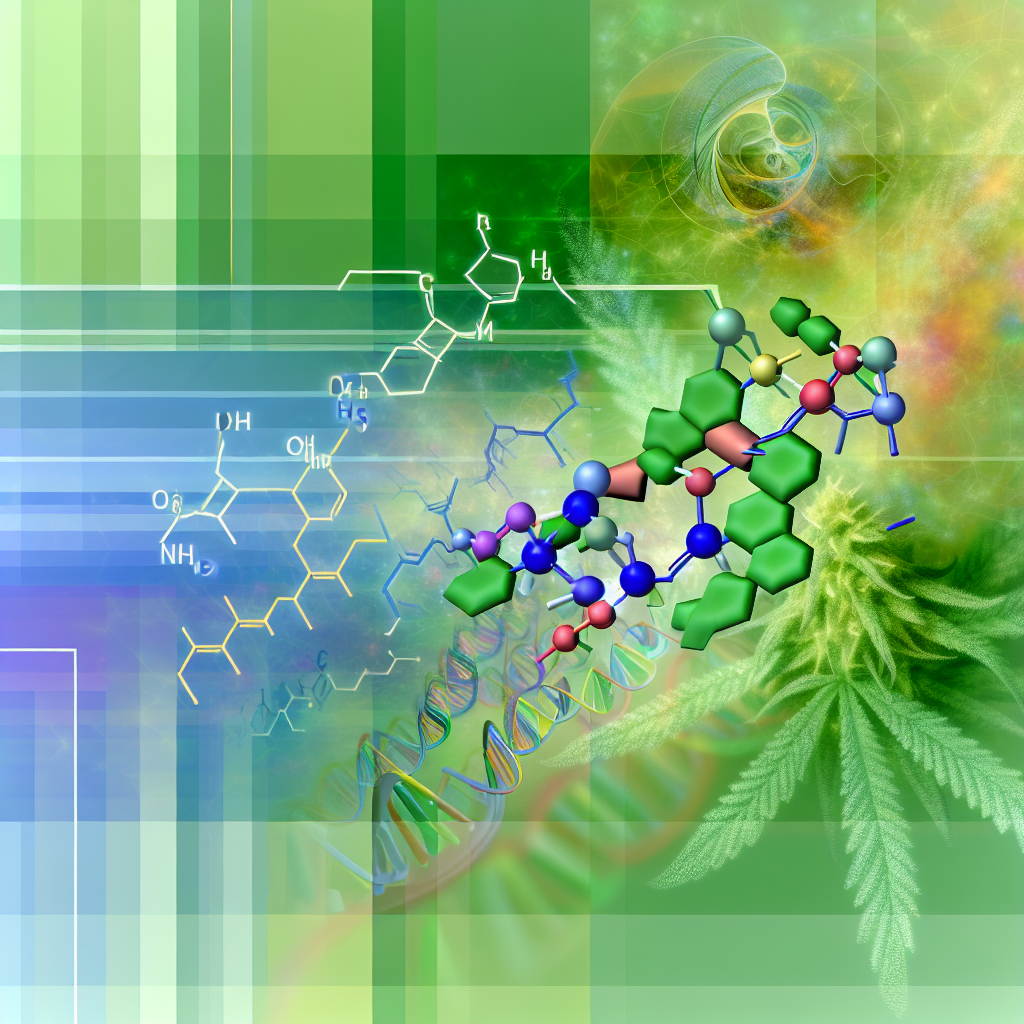Cannabinoid Receptor Allosteric Modulation – The Future of Targeted Cannabis Therapeutics
Introduction
In recent years, the field of cannabinoid science has made remarkable strides, expanding our understanding of the endocannabinoid system (ECS) and its impact on human health. As research deepens, scientists and medical professionals are uncovering more sophisticated strategies to influence cannabinoid receptor activity, opening new avenues for refined, targeted therapeutics. One of the most promising advancements is allosteric modulation of cannabinoid receptors—an innovative pharmacological approach poised to revolutionize cannabis-based medicine.
The ECS primarily operates through two major receptors—CB1 and CB2—which are distributed throughout the brain, nervous system, immune cells, and various organs. Traditional cannabis therapeutics rely on compounds such as THC and CBD, which bind directly to these receptors as orthosteric ligands. While effective, this direct interaction often leads to wide-ranging and sometimes unpredictable physiological responses, including psychoactive effects or a buildup of tolerance over time.
Allosteric modulation offers a paradigm shift. Rather than binding directly to the active site of the receptor, allosteric modulators bind to separate (allosteric) sites on the receptor. This can either enhance the receptor’s function through positive allosteric modulators (PAMs) or diminish it using negative allosteric modulators (NAMs). Critically, this method is believed to preserve natural signaling rhythms of the ECS, lowering the risk of side effects like dependence, tolerance, and systemic imbalance.
This approach holds transformative potential in precision medicine, where the goal is to tailor treatments to individual needs. With the ability to fine-tune ECS activity, cannabinoid receptor allosteric modulators show promise in managing conditions such as mood disorders, neuropathic pain, neurodegenerative diseases, addiction, and inflammation.
In the following sections, we delve into the science behind cannabinoid receptor allosteric modulation, highlight pioneering research, and examine its vast therapeutic potential for healthcare providers, researchers, and cannabis industry professionals.
Features and Supporting Studies
Scientific interest in allosteric modulation of the ECS has surged over the past decade. A pivotal moment occurred in 2005 with the discovery of a compound called Org 27569, a CB1 receptor allosteric modulator. Research published in the Proceedings of the National Academy of Sciences demonstrated its unique dual action: it enhanced ligand binding but reduced receptor activation. This finding was groundbreaking because it signaled the ability to achieve more controlled responses from the CB1 receptor—potentially reducing the risk of overactivation and limiting the psychoactive effects usually attributed to THC.
Further expanding this field, scientists discovered pregnenolone, a natural neurosteroid, which acts as an endogenous CB1 negative allosteric modulator (NAM). A 2014 study published in Science revealed that pregnenolone could block THC-induced memory impairments without interfering with its therapeutic benefits. This discovery has significant implications, particularly for treating schizophrenia and cognitive disorders where limiting THC’s impact on memory while preserving its other effects could enhance treatment options.
Research into CB2-positive allosteric modulators (PAMs) is also rapidly advancing. CB2 receptors are primarily found in immune cells and are known for their role in regulating inflammation and pain. According to a 2017 study in Frontiers in Pharmacology, researchers identified a novel CB2 PAM that amplified anti-inflammatory responses in rodent models of arthritis and multiple sclerosis. Significantly, the compound maintained ECS balance and offered therapeutic benefits without causing psychoactive effects—a milestone in cannabis-based treatment strategies.
Selective allosteric modulators are especially promising for disease-specific cannabis interventions. Their ability to work only in the presence of endogenous cannabinoids or related co-factors makes them safer and more precise. This selectivity reduces off-target effects, making allosteric modulators highly appropriate for sensitive populations, such as children or the elderly. With supporters in both research and clinical spheres, these promising molecules are paving the way toward evidence-based cannabis therapeutics.
The implications also extend beyond healthcare. For cannabis cultivators and extractors, this frontier offers new opportunities. Through genetic mapping and selective cultivation, strains can be optimized to produce higher levels of precursors ideal for allosteric drug development. Similarly, dispensary professionals must grow their knowledge base to guide patients toward products geared for precise ECS modulation—moving beyond terms like “full-spectrum” into the realm of personalized cannabinoid therapy.
Conclusion
Cannabinoid receptor allosteric modulation is ushering in the next evolution of cannabis therapeutics. By enabling subtle, targeted control of the ECS, it opens new doors for treating a range of complex conditions safely and effectively. Allosteric modulators offer a breakthrough by enhancing or inhibiting the body’s own cannabinoid activity rather than overpowering it. This makes them ideal candidates for the future of cannabis medicine.
As this science moves from lab to clinic, cannabis professionals—from cultivators to clinicians—must adapt to these advances. Staying informed and prepared will allow the industry to harness the full potential of this innovation, shaping a future of more individualized, sophisticated, and reliable cannabis-based treatments.
References
1. Org 27569 as a novel CB1 allosteric modulator – Proceedings of the National Academy of Sciences
2. Pregnenolone as an endogenous CB1 NAM – Science
3. CB2 receptor PAMs in anti-inflammation – Frontiers in Pharmacology
4. Allosteric modulation principles and applications – International Journal of Molecular Sciences
Concise Summary
Cannabinoid receptor allosteric modulation is redefining the landscape of cannabis-based therapeutics by enabling fine-tuned control of the endocannabinoid system. Unlike traditional cannabinoids like THC and CBD, allosteric modulators do not bind to the primary site of receptors but interact with secondary (allosteric) sites, enhancing or inhibiting receptor function. This approach improves safety, reduces side effects, and aligns with precision medicine. The development of CB1 NAMs and CB2 PAMs shows promise for treating conditions such as inflammation, anxiety, and cognitive disorders. As research expands, cannabis professionals must adapt to help deliver smarter and more personalized cannabinoid therapies.




